Everybody likes a bit of gossip to some point, as long as it’s gossip with some point to it. That’s why I like history. History is nothing but gossip about the past, with the hope that it might be true.
– Gore Vidal
Sirpur, 83 kms to the northwest of Chhattisgarh’s capital at Raipur is a place where history is being unearthed – one block at a time – everyday! What was once a prosperous kingdom, a centre of Buddhist learning, a pilgrimage big enough to draw the famous Chinese traveller-historian, Hiuen Tsang in 639 AD, is now but a tiny sleepy village.
In one corner of this sleepy village is a government building which is, at present, being occupied by Dr A K Sharma, a retired archaeologist with the Archaeological Survey of India. It is he who is largely responsible for digging out this huge city, practically from peoples’ backyards. When we went to visit him in Sirpur regarding our forthcoming book for Chhattisgarh Tourism Board, we found out, much to our surprise that this 77 year-old man outwalked, outclimbed and outtalked us young people, even in the surprisingly hot October sun.
Located on the banks of the Mahanadi, this historical site is strewn with innumerable monuments and unexcavated mounds. Hindu temples, Buddhist viharas, Jain temples, palaces and residential complexes in this town, indicating that at the height of its glory, it was ruled by kings tolerant towards all religions.
The team comprised of our executive publisher, Ms Swati Mitra, asst. editor Nidhi Dhingra and myself. We were all carrying our cameras, the days were perfect for photography and our excitement knew no bounds. We started from Raipur at 5 AM and on the way, we picked up Mr G L Raikwad, a retired archaeologist from Chhattisgarh State Archaeology Dept. He has worked in Sirpur and had kindly agreed to guide us on the trip.
Perhaps the most striking structure unearthed at Sirpur is the Lakshman Temple that dates back to the 7th century AD. Made of burnt bricks, it was originally dedicated to Lord Vishnu. The presence of a Ram temple nearby had probably led to the present name of the temple. Not only has this structure survived the ravages of time, but also is one of the most beautiful brick temples in the entire country.
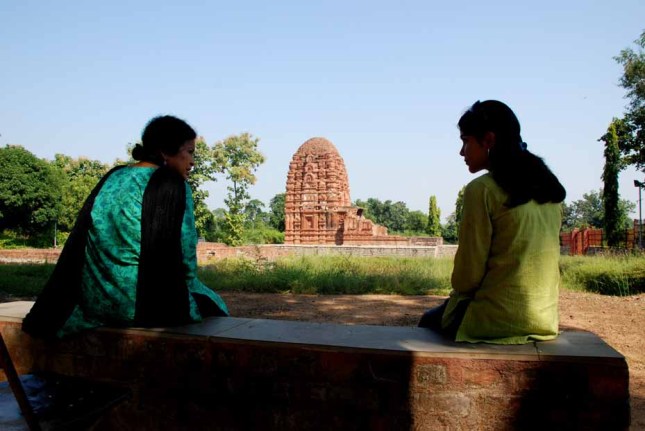
Our executive publisher, Ms Swati Mitra (L) and colleague Nidhi Dhingra (R) with the Lakshman Temple in the background

The Lakshman Temple
Excavations at Sirpur have revealed remains of various Buddhist monasteries or viharas. Based on archaeological findings, Dr Sharma is of the opinion that Sirpur could emerge as a centre of learning, larger than Nalanda. Whether Sirpur emerges larger than Nalanda or not, only time shall tell. Among the varius viharas at Sirpur, the largest are – Tivaradeva Mahavihara, Anandprabhu Kutir Vihara and the Swastika Vihara.
Of these, the Tivaradeva Mahavihara is perhaps the most striking. The gateway to the vihara, is adorned with brilliant sculptures, some of humans while there are friezes, depicting various tales from the Jataka. The sanctum sanctorum of the vihara has the sculpture of the Buddha in the bhumisparsha mudra. Centuries might have passed while the statue lay buried under tons of soil, but the serenity in its face still touches the soul of the beholder.
A stone’s throw away from the Tivaradeva Mahavihara was a mound which was excavated in 2003-04 by Dr Sharma. What emerged was a complex of five temples and a hoard of copper-plates dating back to the reign of the Somavanshi ruler, Mahasivagupta Balarjun. The copper-plate inscriptions reveal that the temples were constructed during the reign of Balarjun and patronised by different members of the royal family.
The largest of the temples was called the Baleshwar Mahadev (and a drab ‘SRP-7’ in the logs of Dr Sharma). The garbhagriha of the temple follows a stellate (star-shaped) plan and houses an imposing white shivalinga. On the entrance to the temple stand sculptures of the two river goddesses – Ganga and Yamuna, on their respective vahanas – the crocodile and the tortoise.
Adjacent to the Tivaradeva Mahavihara, we were taken to an archaeological site named SRP 24-25. To the untrained eye, the entire site looks like a maze of waist-high foundations, paved coutryards and the occassional pillar. To the historically informed, however, it is the glimpse of a city from the 6th centuey AD. The site is primarily a complex housing three temples – one Jain and the others Hindu. The temples were surrounded by a fortified wall. Outside the fortified walls, was the city. I have been a student of history in my college days but standing there as i did, with the sun on my back and the wind through my hair, I soaked up the knowledge that no book can ever impart.
One could easily make out the main street that ended in the temple and structures flanking it, which could be nothing else but shops selling incense and other puja paraphernalia. You can see shops like this even today in front of any temple, anywhere in India. Here lies the beauty of our great nation. While we might be making huge progress in fields of science and all fields futuristic, there are events, customs and traditions which have remained virtually unchanged for thousands of years.
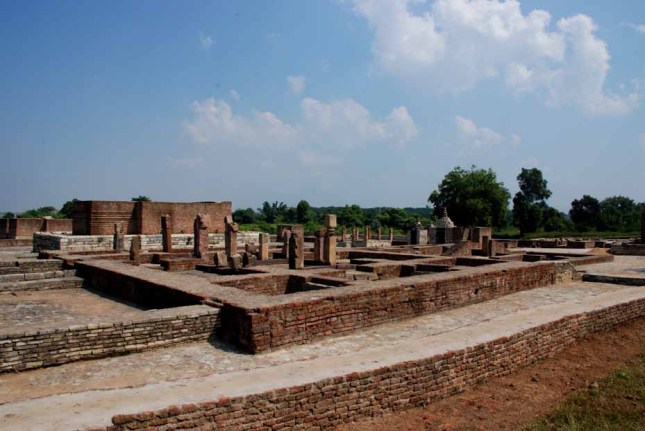
General overview of site SRP 24-25. The pillars in the foreground are all that remains of the Jain temple
While we were shuttling around Sirpur going from one site to the other, we kept passing through a humongous structure made of blocks of stone and stood as high as a five storeyed building. At first glance you might even confuse it with a Mayan step-pyramid. Later in the day, when we finally came there,I was eager to climb to the top and investigate the building for myself . The building is called Surang Tila. The last time i was in Sirpur, in July 2007, Surang Tila had not been totally excavated. I remembered that I had climbed to the top on that occassion too, only to find a heap of household junk and a modern, brick and mortar devi temple. This time the building was totally unrecognisable, all thanks to the archaeologists.
The stairs led on to an open courtyard on top of the structure, which was at one point of time covered with a roof. Supporting the roof were 32 pillars, arranged in four rows of 8 pillars. Parts of these beautifully engraved pillars have been recovered and put in their original position. Flanking the courtyard on three sides are five shrines dedicated to Lord Shiva. It is interesting to note here that while none of the 32 pillars are alike, the shivalingas in each of the five shrines are made of a stone of different colour.
Sirpur is a place like no other. Even today, historians like Dr A K Sharma claim that only a fraction of Sirpur’s treasures have been unearthed. Under every house, every road and every field in Sirpur lies its long forgotten predecessor. It was a privilege to have worked on a site which could, in the near future be the next biggest thing in Indian archaeology.
The Sirpur Travel Guide was published early in 2009. The book is available with our clients (Chhattisgarh Tourism Board) at all their outlets, free of cost.
Please contact:
Chhattisgarh Tourism Board
Paryatan Bhawan
Indira Gandhi Marg
Raipur 492006
Ph: 0711-466415
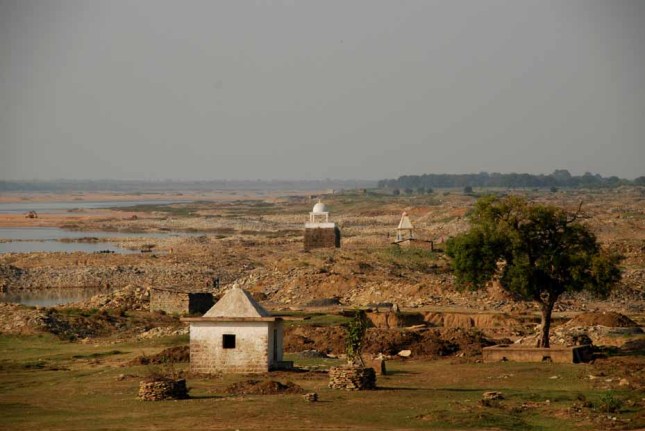
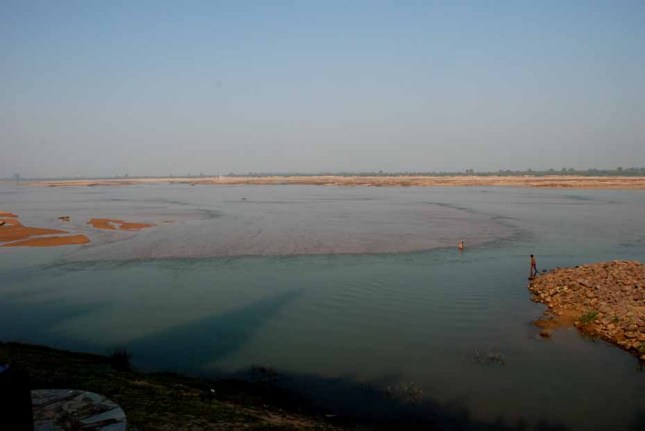
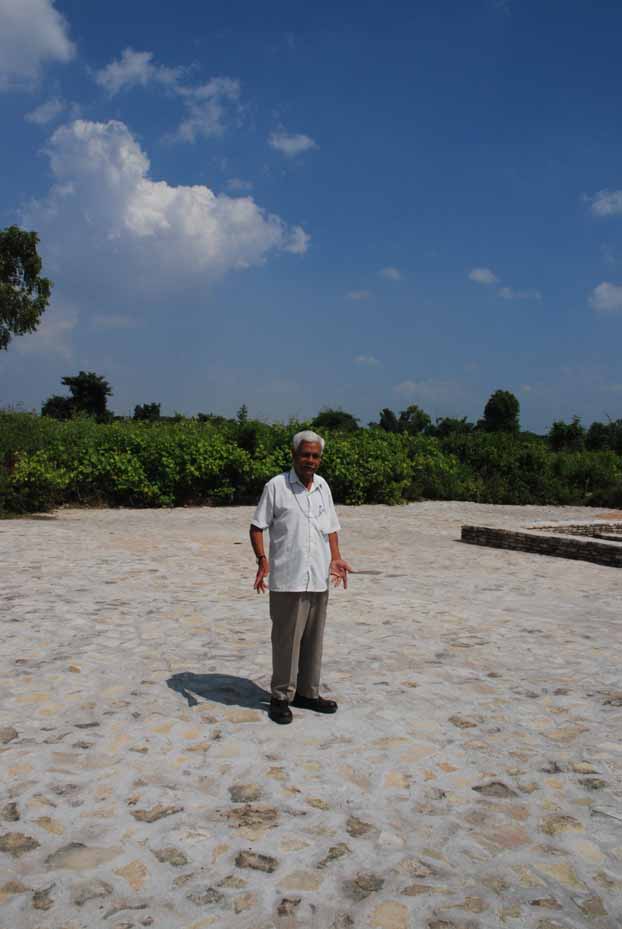
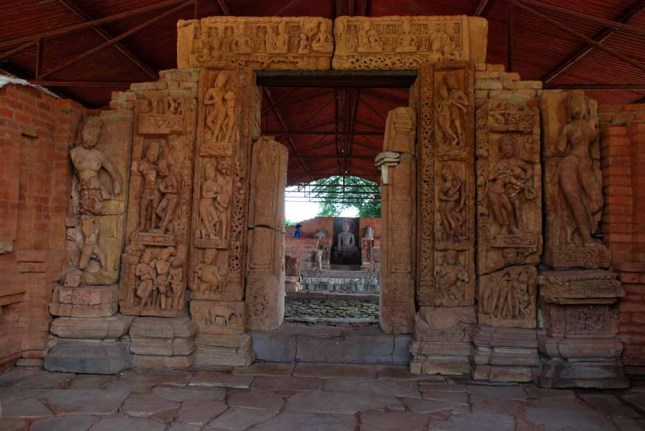
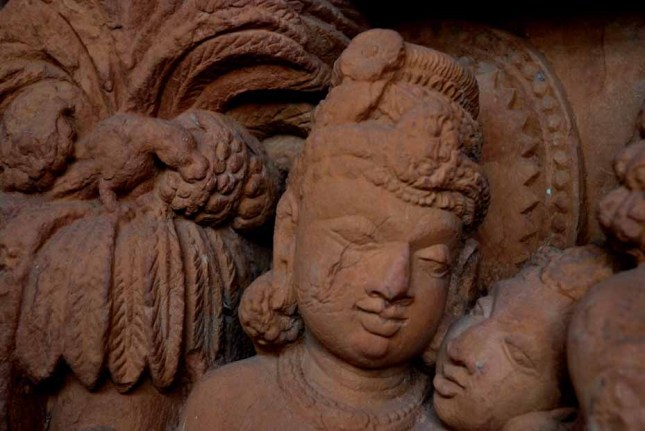


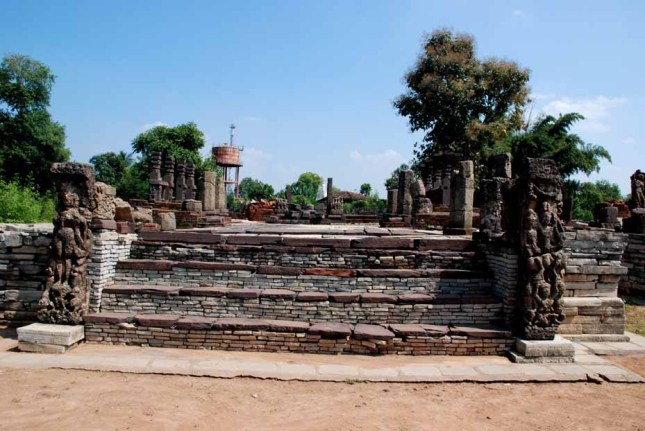
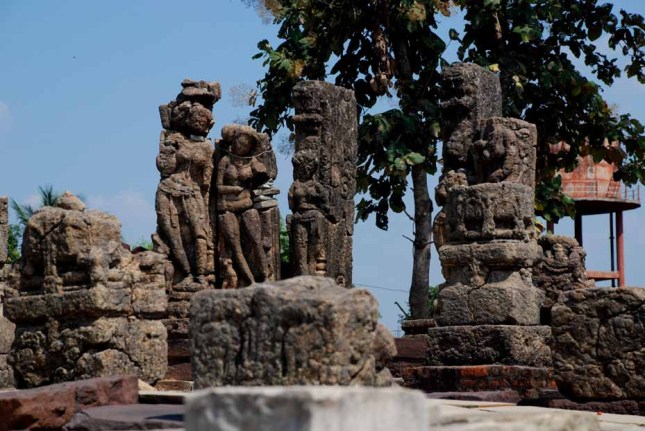

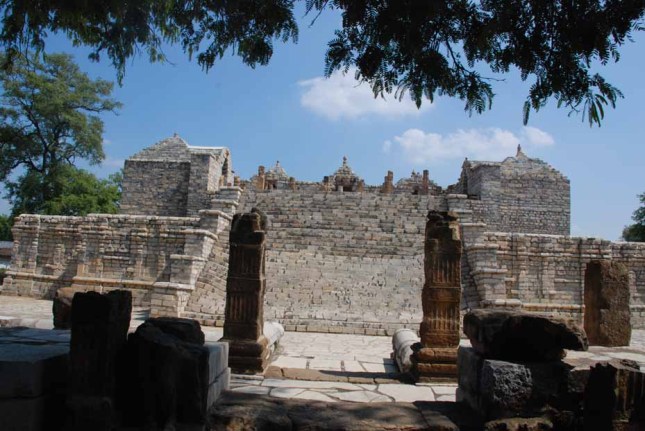
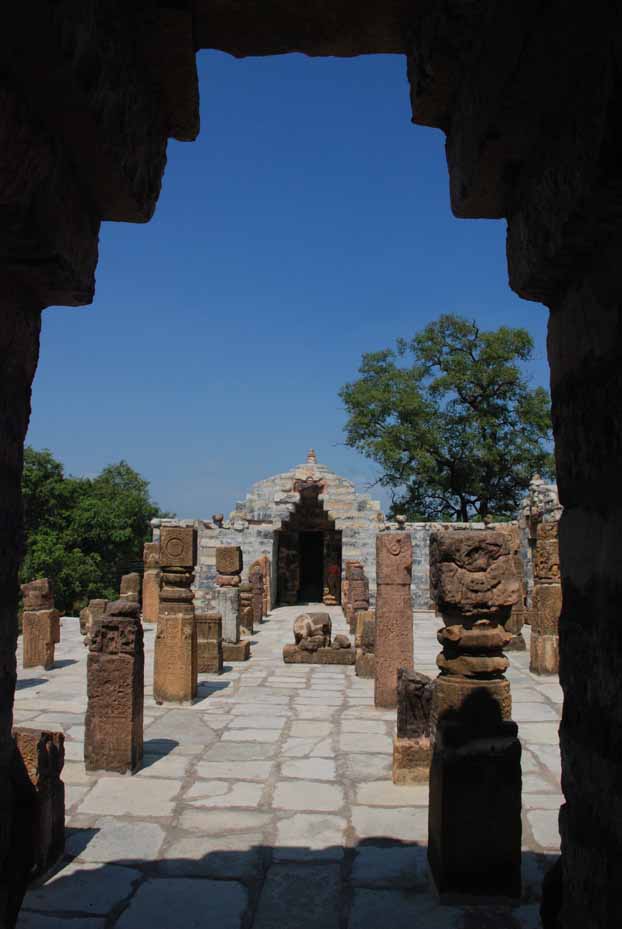

Sneha
July 30, 2009 at 2:56 pm
Wadiya hai…:D
Ranjan Matthew
July 31, 2009 at 5:25 am
I like how you started one paragraph with a ‘stones’ throw away. Pun intended Bodhmeister? Very well written indeed and one must respect Dr. A K Sharma and his dedication to his work. I like old stone work and this place is very magical indeed. Perhaps it’s a good thing that this village is a sleepy little remote one. Better than an overpopulated tourist infested destination with tons of hotels, pollution and littering. The architecture and heritage is best preserved this way with notable organisations like Eicher Goodearth doing it’s bid to glorify an era oh so rich in every way.
Tulika
July 31, 2009 at 6:15 am
Good write up Bodi…wonderfully captured in words and pictures! Felt like I went on a little trip myself! 🙂
Vikram Lal
July 31, 2009 at 6:47 am
Swati and the whole TEAM: This is a great initiative! Very exciting!!
I don’t know how these these ‘things’ work, but we need to have lots available through this blog, whether by giving links or adding many more articles and photos.
The articles so far on the blog are very well written, and fascinating. I will be a regular visitor, no question!!
V L
Swati
July 31, 2009 at 7:26 am
Thank you so much. In fact, we are also learning as we are going along! So hopefully we will be able to add more links, etc., very soon.
Yashika Totlani
August 2, 2009 at 2:35 am
Wow… your job sure does take you places. And ancient archaeological treasures like Sirpur at that! 🙂
Great pictures, descriptive text and an interesting place to visit. You mustve had loads of fun!! And you’re clearly getting great exposure too, meeting retired ASI officers who help you on your discovery of the city. Keep the posts coming!
ed3bodhi
August 3, 2009 at 9:31 am
More than the fun of meeting retired ASI officials (??????) the kick lies in visiting a place which in other circumstances i would never have heard of! I love my job!!! 😀
Ankur
August 6, 2009 at 9:02 am
Thorough job, that! Felt like I actually was there…and great accompanying pics!